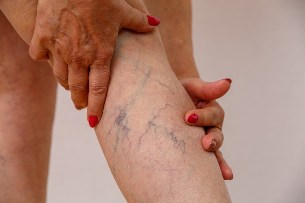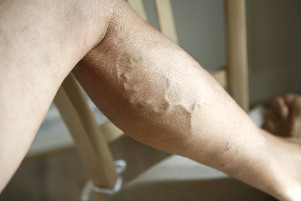
The treatment of an illness is accompanied by the patient's search for answers to questions about lifestyle, diet and medication. The success of the entire therapy depends on it.
In order to get rid of such a common disease as pathological varicose veins, you should know what you can and cannot do with varicose veins. Some restrictions allow the patient to quickly get rid of the pathology and exclude relapse.
The main methods of treating varicose veins
After visiting a phlebologist, the patient receives a number of recommendations on his treatment.
The following drugs can be prescribed:
- Venotonic and angioprotective agents;
- Ointments and gels - are used as a complex treatment, as well as to eliminate mild manifestations in the form of spider veins.
- Steroid anti-inflammatory drugs, on which external forms of medication are based, are required for the treatment of advanced forms of varicose veins.
- NSAIDs - used to relieve pain and reduce inflammation in phlebitis;
- For venous thrombosis, drugs are prescribed that prevent the blood from clotting and dissolve any blood clots.
Unfortunately, drugs are not always enough. In more advanced stages, the doctor may suggest that surgical treatment be considered. Removing the affected vein is one of the types of surgery. Sometimes this difficult operation is the only way to get rid of the pathology. Minimally invasive techniques include sclerotherapy and laser exposure to blood vessels.
Since varicose veins increase the diameter of the vascular branches, their mechanical compression improves the patient's wellbeing considerably. All patients must wear compression stockings. It is selected by a doctor based on the stage of the disease. In addition, the doctor may recommend exercise therapy, massage, and physical therapy.
What can you do at home?

Varicose veins are often accompanied by swelling and pain in the legs in the evening. You can get rid of the symptoms quickly. You should lie on your back and raise your legs above body height (you can lean on the edge of a chair or sofa). You should be in this position for at least 20 minutes. You must do the exercise daily if varicose veins are detected and suspected.
To improve blood circulation, you can leave the "bike" on your back for 1 minute in 3 sets. To activate the work of the calf muscles, leg veins allow walking on toes. This allows you to roll from heel to toe.
Other exercises for varicose veins:
- Bend toes and arms at the same time
- Flexion / extension of the foot,
- Stop the rotation,
- squats,
- alternating knee rises towards the body,
- Walking on the outer and inner surface of the feet.
Walk daily to lose weight without injuring your veins. The distance should be increased gradually. It is better to start with a short distance that takes no more than 15 minutes at a slow pace. You should prepare comfortable shoes, water and compression clothing for a walk. You shouldn't be dehydrated, so bring a small bottle of water with you.
It's important to remember that walking without a jersey for varicose veins can make the disease worse. Sportswear and shoes should not hinder movement or pull the skin with elastic bands.
If you have a treadmill at home, you can set a distance of 1 km at a speed of no more than 5 km / h with no incline. It is best not to increase the load during the first week. When you are sure of your abilities, consider extending the distance a little.
Traditional methods of treating varicose veins
Traditional medicine can be used to treat varicose veins. They are safer than medication, but require prior consultation with your doctor.
- Rinse the Kalanchoe leaves, chop them, pour into a glass container with a capacity of 500 ml. Half a glass or a bottle should be full. The remaining space should be filled with vodka. Remove the infusion in a dark place for 1 week. Shake the solution regularly. After a week, you can use a healing infusion to wipe the affected areas with varicose veins.
- 50 g of horse chestnut flowers should be poured with 500 ml of vodka and infused for 2 weeks. The resulting solution should be drunk 30 drops 3 times before meals. The duration of treatment is 1 month.
- Squeeze juice from fresh potatoes, moisten a bandage made of natural fibers with it, put a bandage on varicose veins at night.
- Compressed from milk whey for the night.
- Pour the white acacia flowers into a bottle, fill it to the brim with vodka, insist. The solution should be used to treat swollen varicose veins.
- An infusion of birch buds is made in the same way. It takes 10 days for the solution to be saturated with useful substances.
- foot ointment: take 10 grams of crushed chamomile flowers, the same amount of sage leaves, 50 g of chestnuts (previously grind), 5 g of ordinary starch. Mix everything, add 200 grams of heated chicken fat. The resulting mass should be heated in a water bath for 2, 5 hours. After that, it is necessary to cool everything down and let it steep overnight. The ointment can be used several times a day to help defeat varicose veins for a long time.
It is important to remember that traditional treatment methods only work in combination with traditional medicine. Lifestyle changes and weight loss may be required.
What is forbidden with varicose veins?

There are a number of restrictions on the identified disease. First, heavy lifting should be avoided. This also applies to those who want to do sports related to strength loads. In this case, the deterioration is possible.
Girls with varicose veins cannot use the following types of cosmetic procedures:
- Shugaring, hair removal with hot wax;
- enzymatic and quantum types of hair removal;
- plucking hair with tweezers;
- hot wraps in the SPA, it is better to replace them with hydromassage or cold wraps;
- Tattoo in the area of the affected veins.
Since varicose veins can be found in any part of the body, including the pelvis, women shouldn't have an abortion. This can be dangerous due to the high risk of bleeding.
When treating varicose veins at home, you should exclude procedures associated with heating the extremities: hot compresses, baths. It is better to use an abrasion with tinctures, a contrast shower.
Those who monitor their physical condition need to give up some exercises: jumping rope, squatting with a load, long runs, aerobics, shaping, cycling, dancing. Walking and swimming are useful.
Cosmetic massages can also be harmful to varicose veins. During the procedure, redistribution of blood flow to other veins and their participation in the pathological process is possible. Therefore, massage courses should only be conducted after medical appointments in a medical facility.
A diet against varicose veins excludes foods high in animal fats, spicy and salty foods, vinegar and a large amount of coffee. You should stick to a rational, balanced diet, which you can choose together with a nutritionist based on your anthropometric data.

























